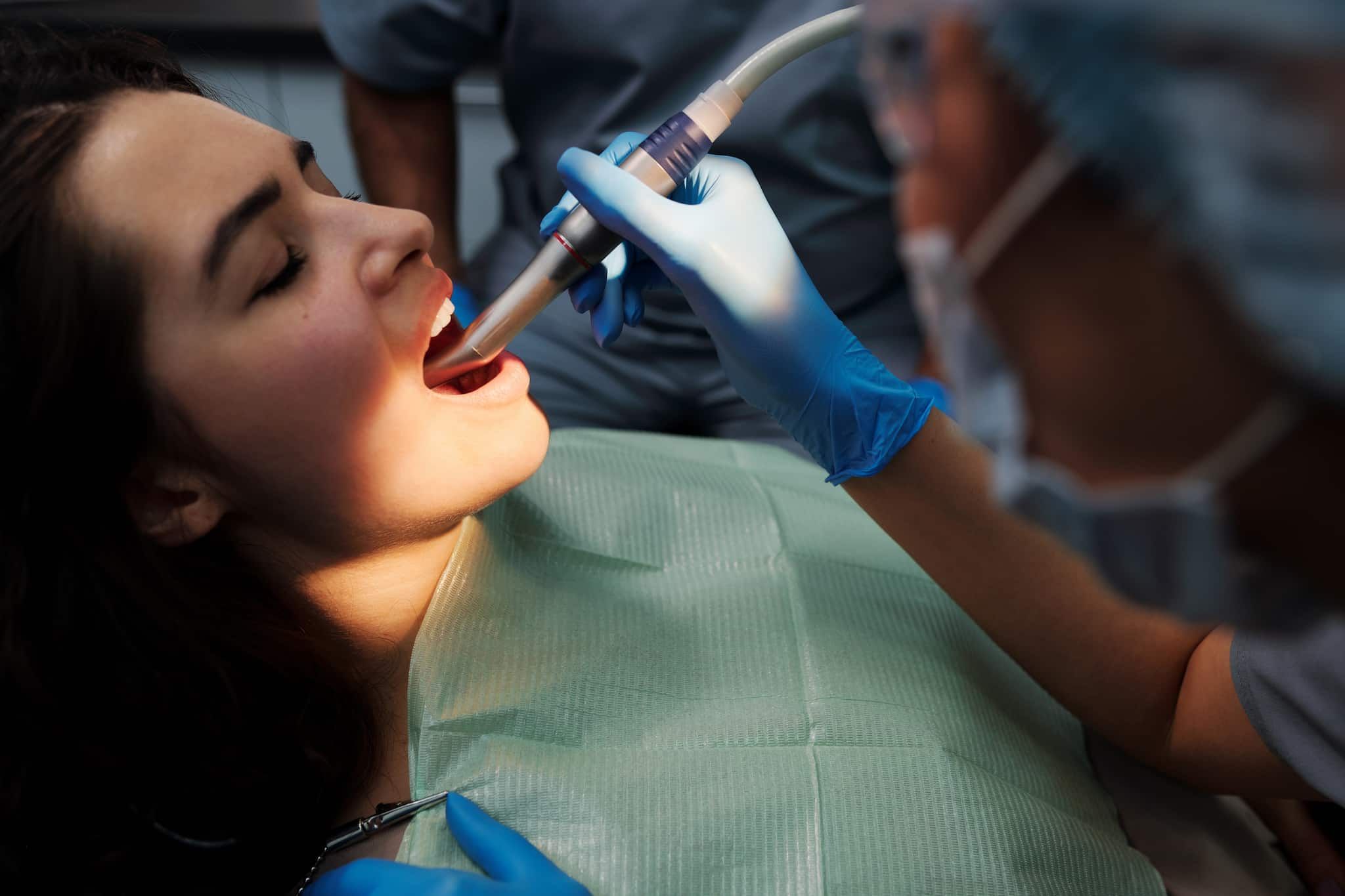
A dental bridge stands true to its name and spans the gap between two teeth that occurs due to tooth loss. It is a dental restoration that carries a false tooth attached to crowns that fit over abutment teeth. Abutment teeth are the teeth present adjacent to the gap left by missing teeth. Dental bridges provide you with the following benefits:
Replace missing teeth and provide you with a uniform, beautiful, and symmetric smile.
Restore your lost confidence by improving your ability to talk and chew properly.
Prevent the adjacent teeth from shifting or tilting into the gap left by a missing tooth.
Restore the drooping facial muscles and make you look younger.
Readjust your bite and eliminate misalignmnet. Bridges also distribute the biting and chewing force evenly.
What are the different types of dental bridges?
Traditional Bridges
A traditional bridge is the most common type of bridge used for replacing missing teeth. It carries a crown for each tooth present adjacent to the gap and a false tooth in between the crowns. The adjacent teeth are filed and shaped to receive the crowns and the false tooth covers the empty space. For the installment of a traditional bridge, it is necessary for teeth to be present on either side of the gap.
Traditional bridges are fabricated from ceramics or porcelain-fused-to-metal.Cantilever Bridges
Cantilever bridges are just like traditional bridges but are held in position by only one adjacent tooth. They are used when a patient has only one tooth adjacent to the gap. The adjacent tooth is shaped and prepared to receive the bridge, and a false tooth covers the gap left by the missing tooth.Maryland Bridges
A Maryland bridge, also known as a resin-bonded bridge, is the alternative for traditional bridges. Traditional bridges follow an invasive technique in which the teeth present adjacent to the gap are filed and reshaped. Maryland bridges use a conservative approach with a metal framework bonded to the back of adjacent teeth. The metal framework carries the false tooth and places it in the gap created by missing teeth.
Maryland bridges are fabricated from porcelain or porcelain-fused-to-metal.Implant-Supported Bridges
Implant-supported bridges are supported by false tooth roots that are installed in the jaw. One implant is placed for each missing tooth, and this series of implants hold the bridge in place.
Implant-supported bridges are used when you have more than one missing tooth.
How are dental bridges placed?
Dental bridges can be installed in two visits to the dentist's office. During the first visit, the adjacent or abutment teeth are filed, re-contoured, and reshaped to receive crowns over them. Next, digital impressions of your teeth are taken to custom-fabricate the bridge. Your dentist will provide you with a temporary bridge to protect the exposed teeth and serve as a placeholder while the permanent bridge is being made.
On the day of your second visit, your dentist will bond the dental bridge in place.
Our friendly staff at Bliss Dentistry will be by your side throughout the entire process. We will explain all of your options and answer any questions you may have.
Request an Appointment
Bliss Dentistry

Tuesday - Friday 9:00am - 5:00pm













